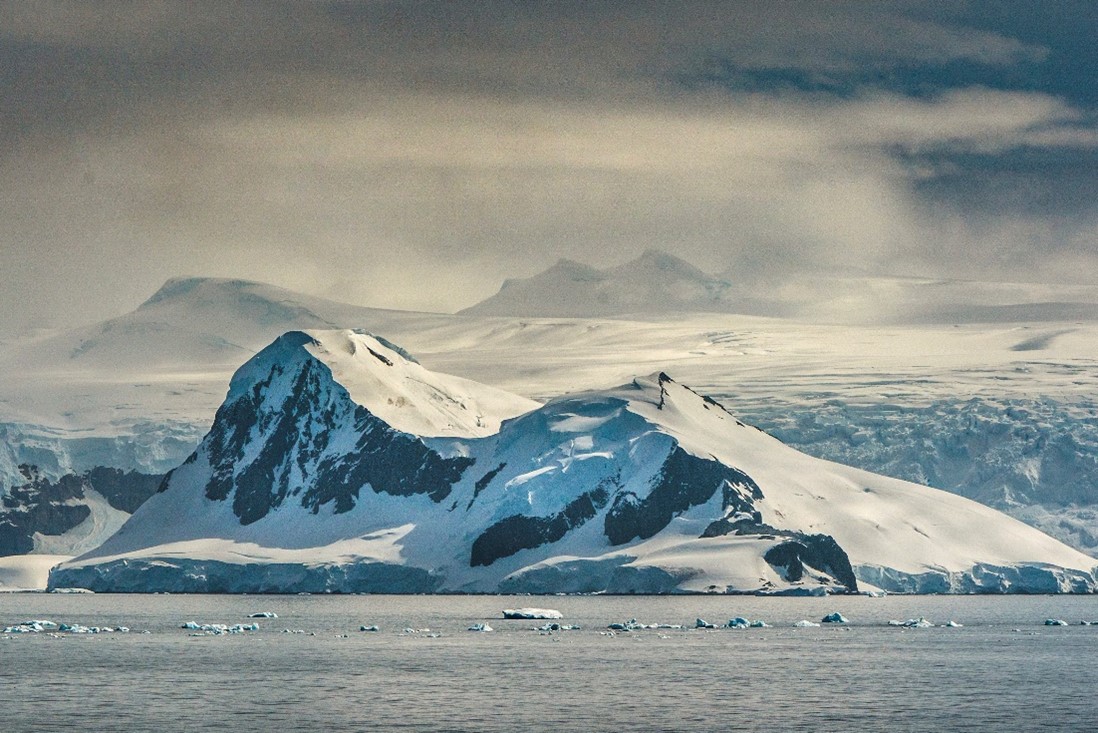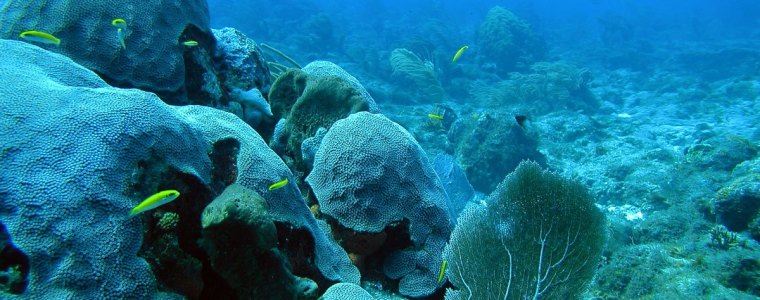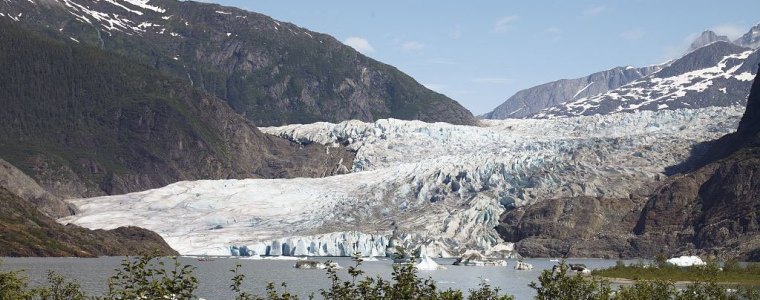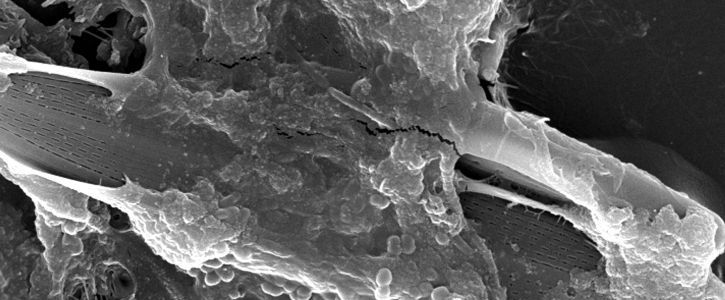
What is the Arctic Haze?
Arctic haze is a phenomenon that occurs at higher latitudes due to anthropogenic air pollution. It appears as a “visible reddish-brown haze” and has the capacity to remain in the northern atmosphere for several months. The extended severity of this pollution in the air mass system during winter, is majorly due to the “lowered rates of particle and gas removal in this cold, dark and rather stable system” (Shaw 1995).
Composition and causes of the Arctic haze
It is a “mixture of sulphate and particulate organic matter and, to a lesser extent, ammonium, nitrate, black carbon (BC) and dust aerosols. It also contains relatively high levels of ozone precursors such as nitrogen oxides (NOx) and volatile organic compounds (VOCs)” (Law and Stohl 2007).
According to researchers from the University of Rhode Island, majority of the Arctic haze is formed by pollutants erupting from coal burnt by cities in the mid-northern latitudes. The "concentrations of these aerosols contain about 90 per cent sulphur (S) and 10 per cent carbon (C), giving the haze a reddish colour” (earth.com 2018). The burning of petroleum products by the western nations also releases manganese (Mn) and vanadium (V) into the air, adding what is known as black carbon to the atmosphere (earth.com 2018). According to an article in The Canadian Encyclopaedia, the source of two-thirds of the haze pollution happens to arrive from the “heavily industrialized nations of Eastern Europe; the remainder arriving from Western Europe”.
While studies are increasingly pointing out that greenhouse gas is the predominant cause of global warming in the Arctic, the components/particles of the haze “act as a trap for sunlight, holding infrared radiation and thus warming the surface and atmosphere” (earth.com 2018). This trap is also enhanced by the fact that haze appears maximum during the “late winter and early spring when the removal processes in the dry and stable Arctic atmosphere are very slow” (Law and Stohl 2007).
Unravelling the role of anthropogeny behind the Arctic haze
More than 50 years ago, pilots flying in the Alaskan Arctic and the Canadian region, reported observing a “strange haze of unknown origin” (Quinn et.al. 2006). Shaw and Wendler (1972), based on the measurements from McCall Glacier in the Alaskan region, started noticing that the turbidity becomes maximum during the spring season. During the initial days of observations, “measurements of the vertical structure of the haze were made in an Alaskan bush airplane with a hand-held sun photometer” (Quinn et.al. 2006). The origin of haze still remained unclear and the cause of the phenomenon was credited to “ice crystals seeded by open leads or blowing dust from riverbeds” (Quinn et.al. 2006). By the late 1970’s though, the role of anthropogeny in the phenomenon started becoming clearer, primarily through “chemical fingerprinting”.
At the First Arctic Air Chemistry Symposium in 1978, held at Lillestrom, Norway, an informal measurement network was agreed upon. The “spatial gradients soon showed the direction of flow and the surprisingly large extent of this anthropogenic cloud of pollution” (Quinn et.al. 2006). Long-term measurements along with comprehensive on field research programmes over the years has now conclusively proven that the haze is a phenomenon of anthropogenic origin. “Due to emissions from Europe and the former Soviet Union that are transported to and trapped in the Arctic air mass during the winter and early spring” (Quinn et.al. 2006).
Why study the Arctic haze?
What makes the study of this phenomena important? There are several reasons. First - the Arctic haze changed the perception that pollution due to aerosol could mostly only be local or regional. “The cold, dry air in the polar regions allows particles to remain windborne for weeks rather than days, which in turn allows sulphur contaminants to spread from industrial sources in Eurasia across the entire Arctic and into North America” (Arctic Monitoring and Assessment Program 1997).
Secondly, there are apprehensions amongst the scientific community that the components of haze will help channelize metals and other contaminants into the polar region. For example, “Metals as well as some persistent organic compounds adhere to aerosols and could be deposited along with the aerosols and substantial amounts of industrial contaminants may thus be washed out by precipitation occurring over major ocean areas surrounding the Arctic” (Arctic Monitoring and Assessment Program 1997).
Thirdly, haze reduces visibility and thus becomes a potential threat to air traffic, even though today’s advanced automated navigation systems have reduced the perils owing to poor visibility. However, the Arctic haze is a phenomenon which still requires much study on its conclusive direct and indirect effects on climate change.
REFERENCES
Arctic Monitoring and Assessment Program. 1997. Arctic Pollution Issues: A State of The Arctic Environment Report. Available at: https://www.amap.no/documents/download/75/inline
The Canadian Encyclopedia. 2013. Arctic Haze. Available at: https://thecanadianencyclopedia.ca/en/article/arctic-haze. Accessed on February 20, 2020.
earth.com. 2018. What is Arctic Haze? Available at: https://www.earth.com/earthpedia-articles/arctic-haze/. Accessed on February 21, 2020.
Law K.S. and A. Stohl. 2007. Arctic Air Pollution: Origins and Impacts, Science, 315: 1537-1540. Available at:
http://www.atmo.arizona.edu/students/courselinks/spring08/atmo336s1/courses/spring07/atmo569b/Law2007.pdf
Raatz W.E. 1984. Observations of “Arctic Haze” during the “Ptarmigan” weather reconnaissance flights, 1948-1961, Tellus B: Chemical and Physical Meteorology, 36(2): 126-136. Available at: https://www.tandfonline.com/doi/pdf/10.3402/tellusb.v36i2.14882
Shaw G.E. 1995. The Arctic Haze Phenomenon, Bulletin of the American Meteorological Society, 76(12): 2403-2414. Available at: https://journals.ametsoc.org/doi/pdf/10.1175/1520-0477%281995%29076%3C2403:TAHP%3E2.0.CO%3B2
Quinn P.K., G. Shaw, E. Andrews, E. G. Dutton and T. Ruoho-Airola. 2007. Arctic haze: current trends and knowledge gaps, Tellus B: Chemical and Physical Meteorology, 59(1): 99-114. Available at: https://www.tandfonline.com/doi/pdf/10.1111/j.1600-0889.2006.00236.x








